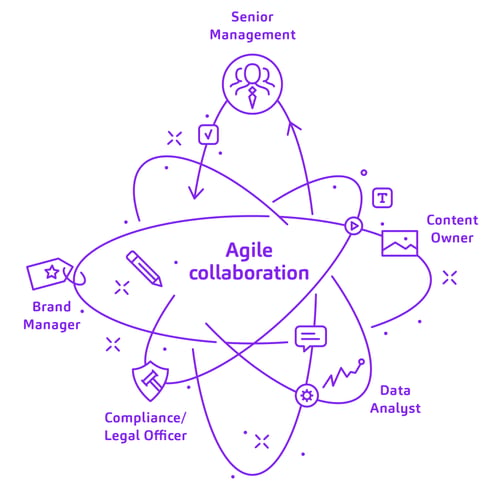The Most Significant Differences Between a WCM and an Agile CMS
 Stijn Wessels
Stijn Wessels

You will undoubtedly have already come across the term WCM/WCMS while hunting for a new CMS. But what exactly are the differences between such a Web Content Management System and an agile CMS? And which system will be the most useful to you?
First up, the similarity: both a WCM and an agile CMS make it easy to present yourself online. Just like an agile CMS, a WCM is a tool that enables even non-developers to publish texts, audio, graphics, images, and videos.
So, what are WCM and agile CMS differences?
On all your channels
A WCM will usually enable you to publish on a single channel. It manages pages and structures in a hierarchy, requiring different expertise and stakeholders to follow linear ‘swim lane’ processes for publishing.
An agile CMS will allow you to publish not only on your website but also on all your digital channels, i.e., apps, newsletters, and social media. Even though they might claim otherwise, a classic CMS or WCM focuses on one channel. But an agile CMS ensures that the content is automatically published there correctly and that it is in line with all your other digital communications.
Effective collaboration
An agile CMS will also help you collaborate effectively with many different users. One user might see to it that the right images are posted, for instance, while another makes sure there are good calls to action. A third, the stakeholder, checks if the chosen pictures and CTAs are as briefed, and a fourth merges these micro-content items to form one macro-content item that can be published on the website, in the app or newsletter.

Managing projects
Another aspect an agile CMS can help you with is managing projects. For example, if you are working according to the Kanban system, you will be able to allocate specific tasks to colleagues. Structuring is straightforward too; you can group content by campaign, proposition, life event, and so on, making it easier to assign input and briefings.
More versatility
Last but not least is versatility. All content needs to be created and uploaded in a WCM to be published. In contrast, an agile CMS does not necessarily have to contain the content: it just needs to be possible for the content to be unlocked by integration. This results in a straightforward transition to an agile CMS.
Strategic tool
In short, an agile CMS can be regarded as a bona fide strategic tool, whereas the classic WCM is primarily a functional yet one-dimensional piece of equipment. An agile CMS will support your content strategy, helping you present the right content to a customer or prospect at the right time.
Hence, which system will be most useful to you is likely a no-brainer. As far back as 2019, market research firm Forrester predicted a bleak future for the classic WCM. A perfectly logical prediction as an agile CMS is much more consistent with how we work nowadays.



